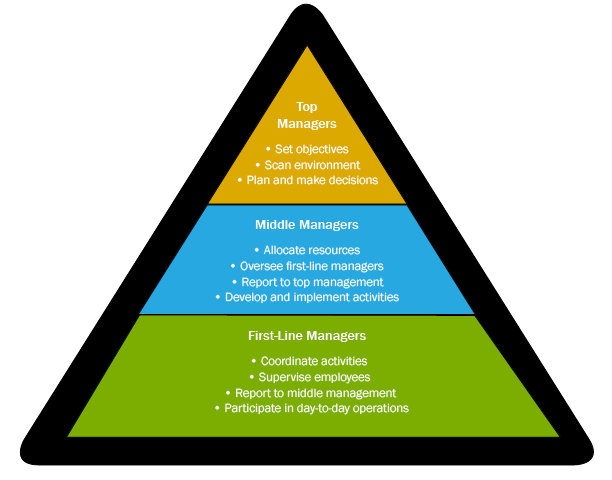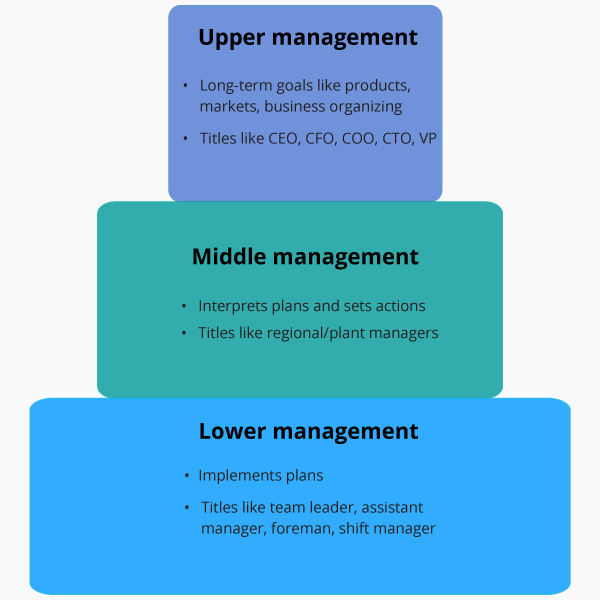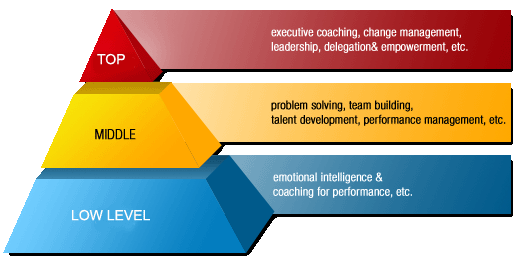Typical Functions of First Line Managers Include
Line manager is the one who is responsible for getting effective performance for ensuring adequate training and development for welfare and discipline counseling and hiring. Responsibilities of the team leader include developing timelines making specific work assignments providing needed training to team members communicating clear instructions and generally ensuring that the team is operating at peak efficiency.
The line manager reports to a higher-ranking manager and his role is to oversee the operations of the business and manage.

. The Five Functions of Management was developed by Henry Fayol in 1916 at a time when management models simply didnt exist. Line managers activities typically include. Performance management and appraisal.
The concepts and activities of management apply to all levels of management as well as to all types of organizations and activities managed. Typical functions of first line managers include. Good line managers are actively involved with their team members providing support offering encouragement and delivering constructive feedback on a daily basis.
Typical titles of first-line managers include supervisor foreman and section leader. Common job titles include operations manager division manager plant manager and branch manager. First-line managers play a vital role they are the managerial glue of a business responsible for many critical day-to-day operations as well as making sure organizational objectives goals and plans are met and implemented.
Strategy development and corporate reporting. They supervise all the essential aspects of a project. Theyre often an organizations largest population of leaders and in many cases theyre entry-level managers who are on the line and in closest contact with.
A line manager is a person or the manager who is responsible for heading a revenue-generating department. These are a crucial link between top management and first line operating management. The first-line manager functions as the lynchpin between line staff and upper management.
Theyre less involved in. To plan the activities and task to achieve the goals set by the top-level management. These are concerned with preliminary control in the forms of operating policies and procedures.
This consists of identifying and assessing controls and mitigating risks. Planning decision making objective setting. Far from the days of yore when first-line supervisors took on the mystical aura of the boss who.
Recruiting the right talent for the job. Other key functions of a line manager include. Supervising the businesss performances.
They act as a communicator between the first-line employees and the middle management of the company management hierarchy. Bringing Resources to Life More questions like this A writ issued by a clerk of a court under seal or by any magistrate or by the foreman of a grand jury in any criminal action or proceeding authorized by law commanding some peace officer to. Onboarding training mentoring coaching and employee development.
The ten roles are. Formulating rules regulations and procedures for lower level management members. First-line or supervisory management Managers who directly supervise nonmanagement employees employees who do the work.
He has a vital role in an organization and that is of executing key functions for instance decision-making target setting and policymaking. To guide the workers and keep them informed of the work producers and policy proposals. The model breaks down a managers job into five functions.
Individuals also need supervision so that they can be given further guidance which helps them perform more efficiently. Their main functions with regard to employees include. Others may describe frontline managers as those who are responsible for the critical day-to.
The first line of defense lies with the business and process owners. They also undertake the payroll duties of the company. Executing policies laid by top management.
Typical functions of first line managers include. They do to supervise other managers. Adjusting the height of conveyors to match the height of manufacturing workers is an outcome that could be attributed to which one of Frank and Lillian Gilbreths philosophies.
Motivation Health and Well-being. First-line managers supervise employees and coordinate their activities to make sure that the work performed throughout the company is consistent with the plans of both top and middle management. The manager makes a plan to achieve the objectives of the organization.
Coordinating activities supervising employees and participating in day-to-day operations. A manager at the lowest level in an organization who deals directly with employees. Top management is made up of senior-level executives of an organization or those positions that hold the most.
They directly influence employee satisfaction and engagement and as a result organizational productivity and even customer satisfaction. As managers people carry out the managerial functions of planning organizing staffing leading and controlling. The team leader reports to a first-line or middle manager.
The first level of management is called top-level management. Operational management is responsible for maintaining effective internal controls and for executing risk and control procedures on a day-to-day basis. Dealing with people on a daily basis and being the face of the business.
First line managers direct non-management employees. First level managers are often called supervisors. First Line of Defense Management.
The manager organizes people and resources to best achieve the plan. Office managers coordinate the various operations performed by the employees of the corporation. To supervise handle control and manage the performance improvement plan of the workers.
Some of their functions include. Once the delight at being promoted into this supervisory position wears off and reality sets in you may find that first-line management is a lot harder than you anticipated. Examples of first line managers are the foreman or production supervisor in a manufacturing plant the technical supervisor in a research department and the clerical supervisor in a large office.
To assist and solve the problems of the workers.

Managers Introduction To Business

The 6 Critical Skills For First Line Managers Ccl

Types Of Managers And Their Roles Principles Of Management

Company Management Hierarchy Business Management Organizational Chart Leadership Management

Comments
Post a Comment